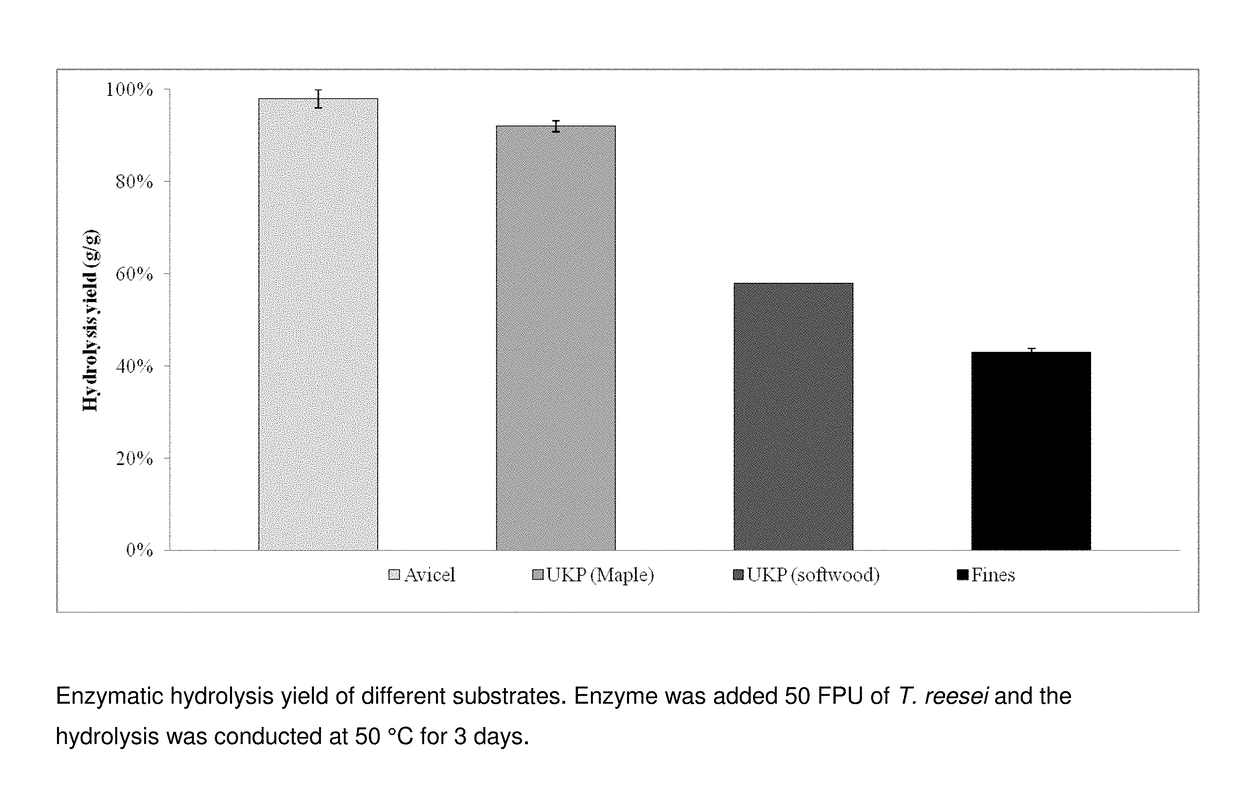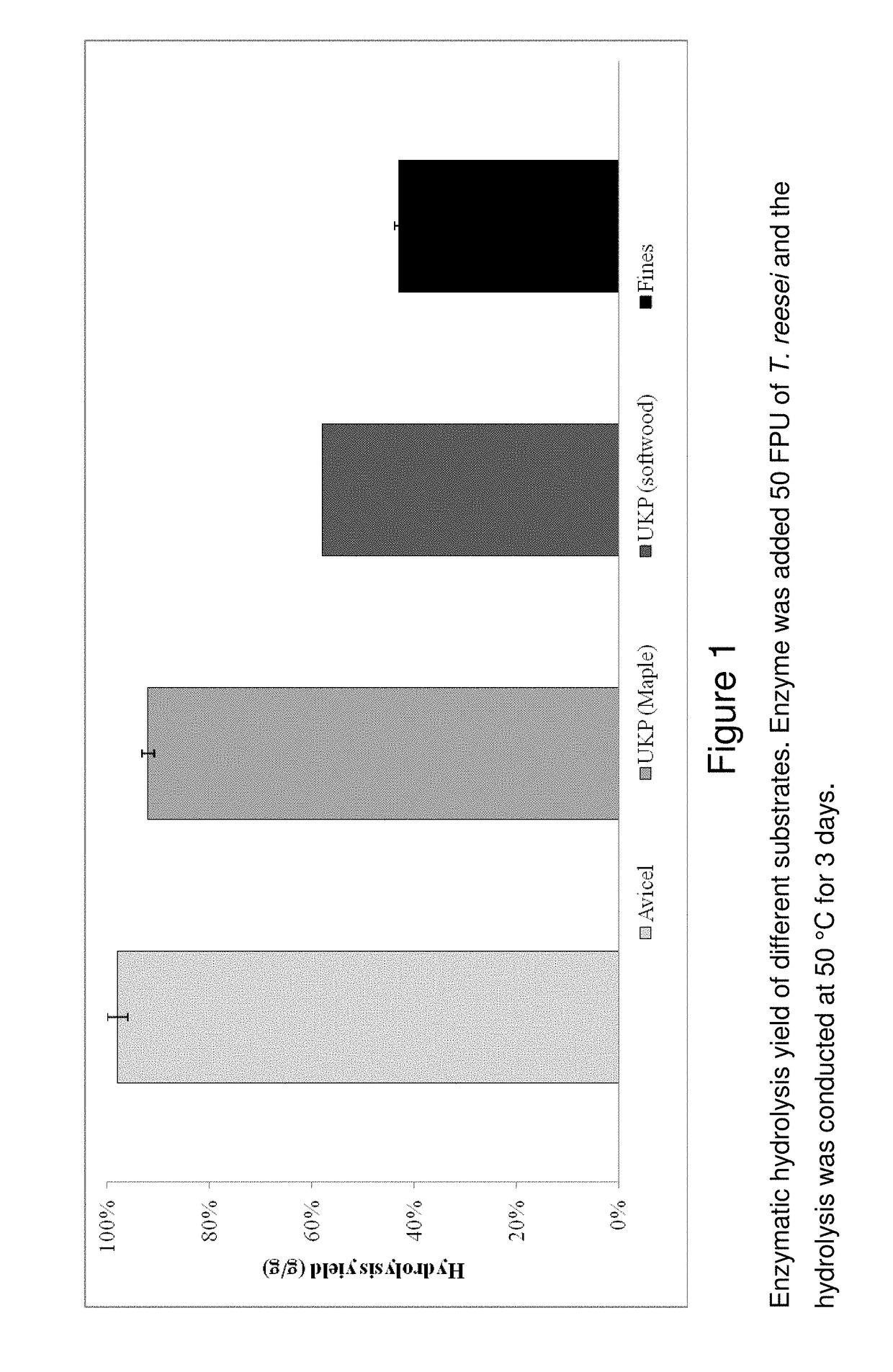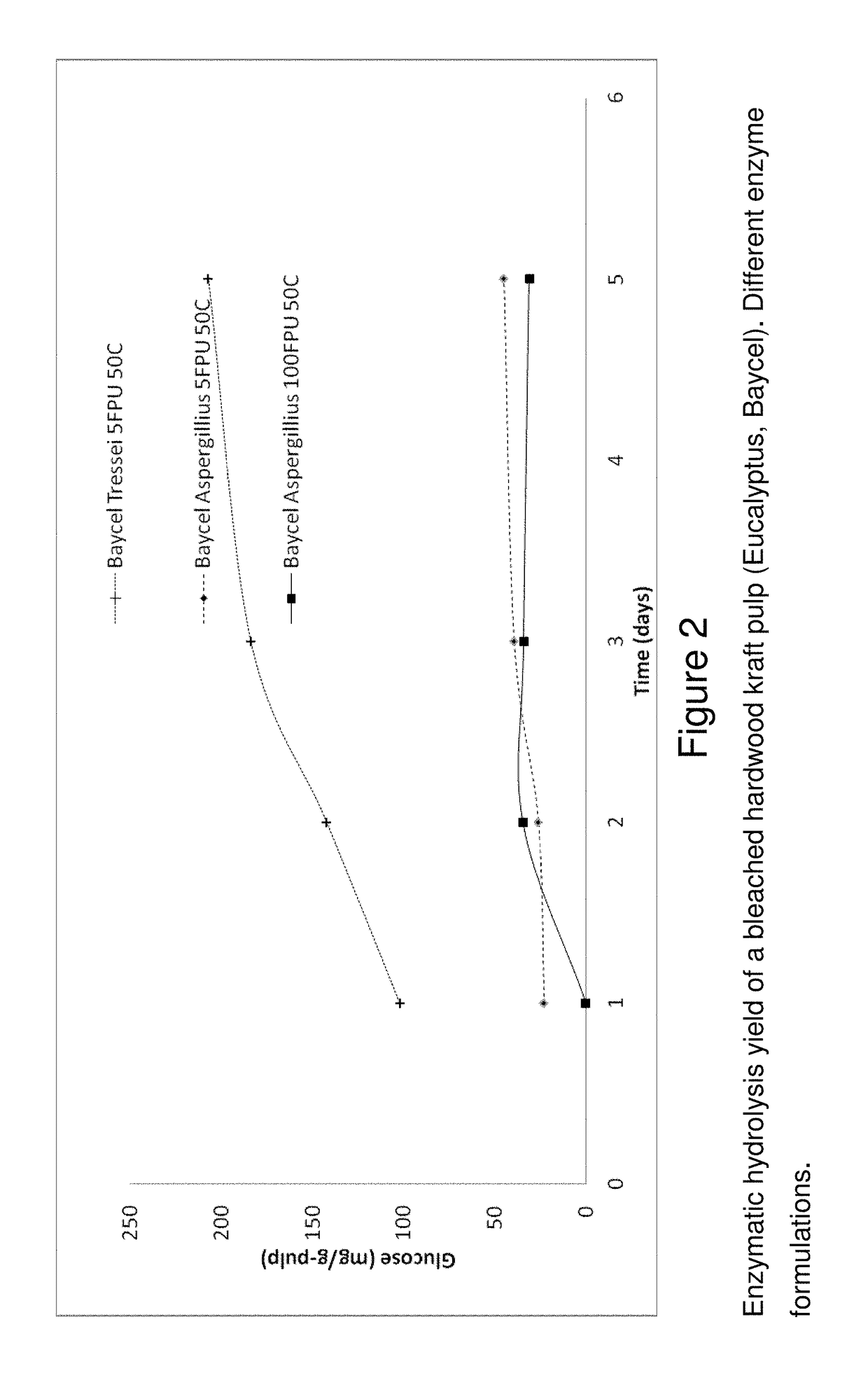Enzymatic hydrolysis of old corrugated cardboard (OCC) fines from recycled linerboard mill waste rejects
a technology of occ and fines, which is applied in the field of cellulosic solid waste processing, can solve problems such as environmental problems, and achieve the effect of enhancing enzyme activity and sugar yield
- Summary
- Abstract
- Description
- Claims
- Application Information
AI Technical Summary
Benefits of technology
Problems solved by technology
Method used
Image
Examples
Embodiment Construction
Material and Methods
Raw Materials
[0114]The fines were procured from a NYS based recycled linerboard-manufacturing mill. Additionally a comparative study was undertaken where commercial OCC boxes were repulped and hydrolyzed using commercial cellulases. Unbleached softwood kraft pulp (USKP), an unbleached hardwood kraft pulp (UHKP) and mixtures of fiber and fillers were used for hydrolysis. Recycled OCC was prepared by simple slushing of OCC boxes and dispersion. Pulps were ground and screened through a 200 mesh screen (such that the accepts were less than 75 μm in size).
[0115]Samples of commercially available cellulases were obtained—Aspergillus Nigra, and Trichoderma Reesei.
Fines Analysis
[0116]pH meter 2500 series of Cole Parmer® was used for evaluating pH of fines and hydrolysate. Solid content and ash content was computed according to the National Renewable Energy Laboratory (NREL) Laboratory Analytical Procedure (LAP, NREL / TP-510-42627, NREL / TP-510-42622). Enzyme activity was a...
PUM
| Property | Measurement | Unit |
|---|---|---|
| temperature | aaaaa | aaaaa |
| particle size | aaaaa | aaaaa |
| pH | aaaaa | aaaaa |
Abstract
Description
Claims
Application Information
 Login to View More
Login to View More - R&D
- Intellectual Property
- Life Sciences
- Materials
- Tech Scout
- Unparalleled Data Quality
- Higher Quality Content
- 60% Fewer Hallucinations
Browse by: Latest US Patents, China's latest patents, Technical Efficacy Thesaurus, Application Domain, Technology Topic, Popular Technical Reports.
© 2025 PatSnap. All rights reserved.Legal|Privacy policy|Modern Slavery Act Transparency Statement|Sitemap|About US| Contact US: help@patsnap.com



